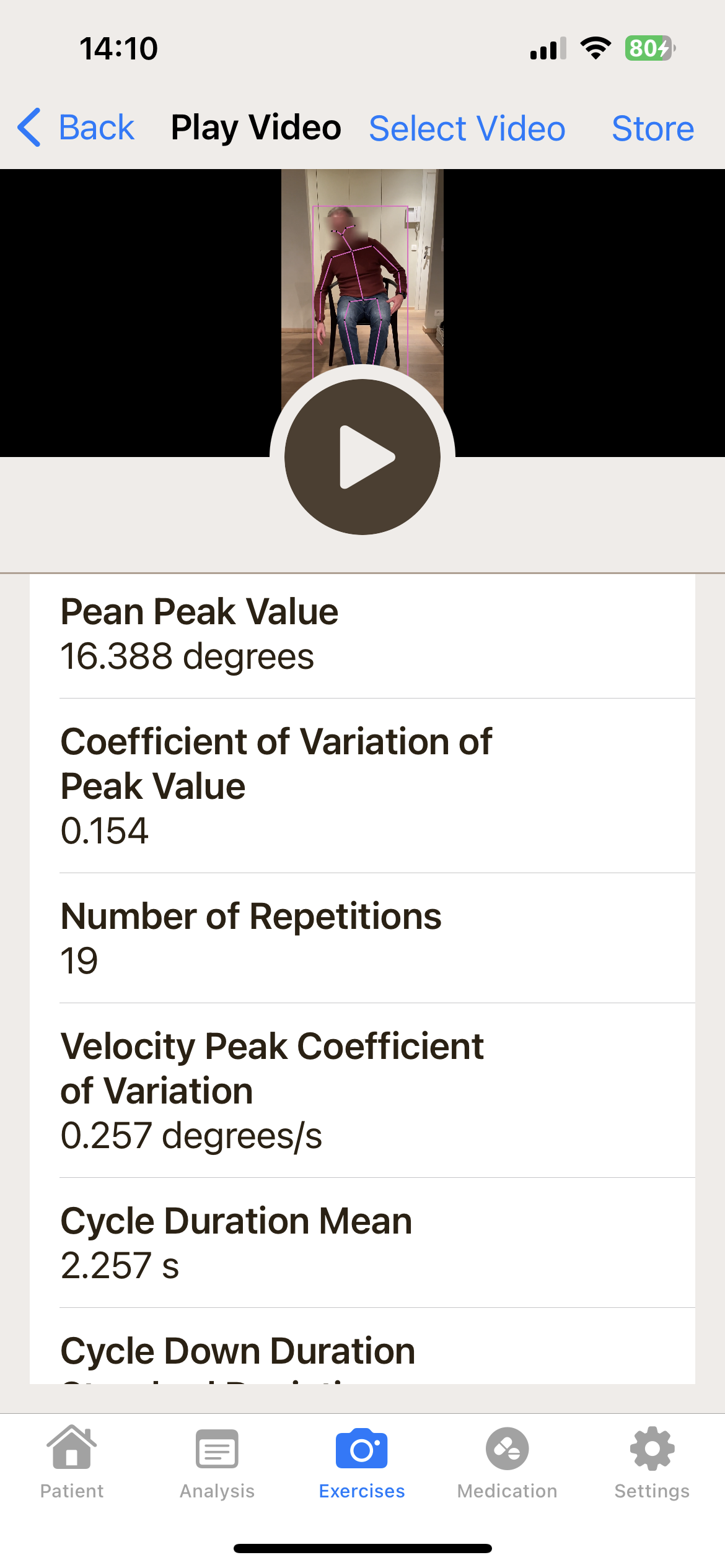Objective: Feasibility and preliminary validation of a marker-less solution for automatic capture and quantification of movements during prespecified tasks of people with Parkinson’s (PwP) using videos acquired by a smartphone.
Background: Traditional clinical assessment in Parkinson’s disease involves visual rating of motor functions during medical appointment, which can be subjective and may not capture the continuous fluctuations in the movements. Therefore, we developed a non-contact solution using videos acquired through a smartphone to record and analyze Parkinson’s motor functions. This solution provides quantitative data about motion features that can be added to self-reported symptoms by PwP through the app NeuroPath Insights, allowing for a continuous and global overview of the patient’s state
Method: Videos of PwP performing specified motion exercises were acquired through NeuroPath’s app on a smartphone and uploaded onto NeuroPath’s secured cloud. A motion analysis pipeline was then run, in which deep learning methods were applied to extract the individual’s motion in the recorded exercises. This data was automatically processed to extract quantitative features such as speed, amplitude, number of repetitions, symmetry.
The smartphone-based motion capture solution was tested on 40 healthy volunteers and 13 individuals with Parkinson’s for multiple actions covering both gross and fine-grained movements.
Results: Poses obtained with a single camera viewpoint were validated against the ground truth poses captured by a robust motion capture system composed of 10 to 18 camera viewpoints in a motion-lab. Differences in poses were less than 6 pixels. Results of the automatic processing for quantitative motion feature extraction were manually verified and showed that these features accurately measure timing and spatial characteristics of the movements allowing to detect PwPs’ motor symptoms such as slowness or asymmetry.
Conclusion: Our data indicate that a non-intrusive video-based solution for continuous, quantitative, and objective tracking of PwP mobility has the potential to improve Parkinson’s disease assessment by providing a continuous monitoring system that captures the core PD clinical manifestations. Future validation will include a correlation study between the extracted features and severity scores on validated motor scales given by different neurologists in 5 European hospitals.
To cite this abstract in AMA style:
A-S. Bridoux, G. Altares, G. Garraux, M. Koivu, L. Mäkitie, E. Fiorenzato, L. Weis, A. Antonini, A. Nieuwboer. Non-intrusive Video-Based Solution for Continuous Quantitative Monitoring of Parkinson’s Patients’ Motor Functions [abstract]. Mov Disord. 2023; 38 (suppl 1). https://www.mdsabstracts.org/abstract/non-intrusive-video-based-solution-for-continuous-quantitative-monitoring-of-parkinsons-patients-motor-functions/. Accessed December 12, 2025.« Back to 2023 International Congress
MDS Abstracts - https://www.mdsabstracts.org/abstract/non-intrusive-video-based-solution-for-continuous-quantitative-monitoring-of-parkinsons-patients-motor-functions/

